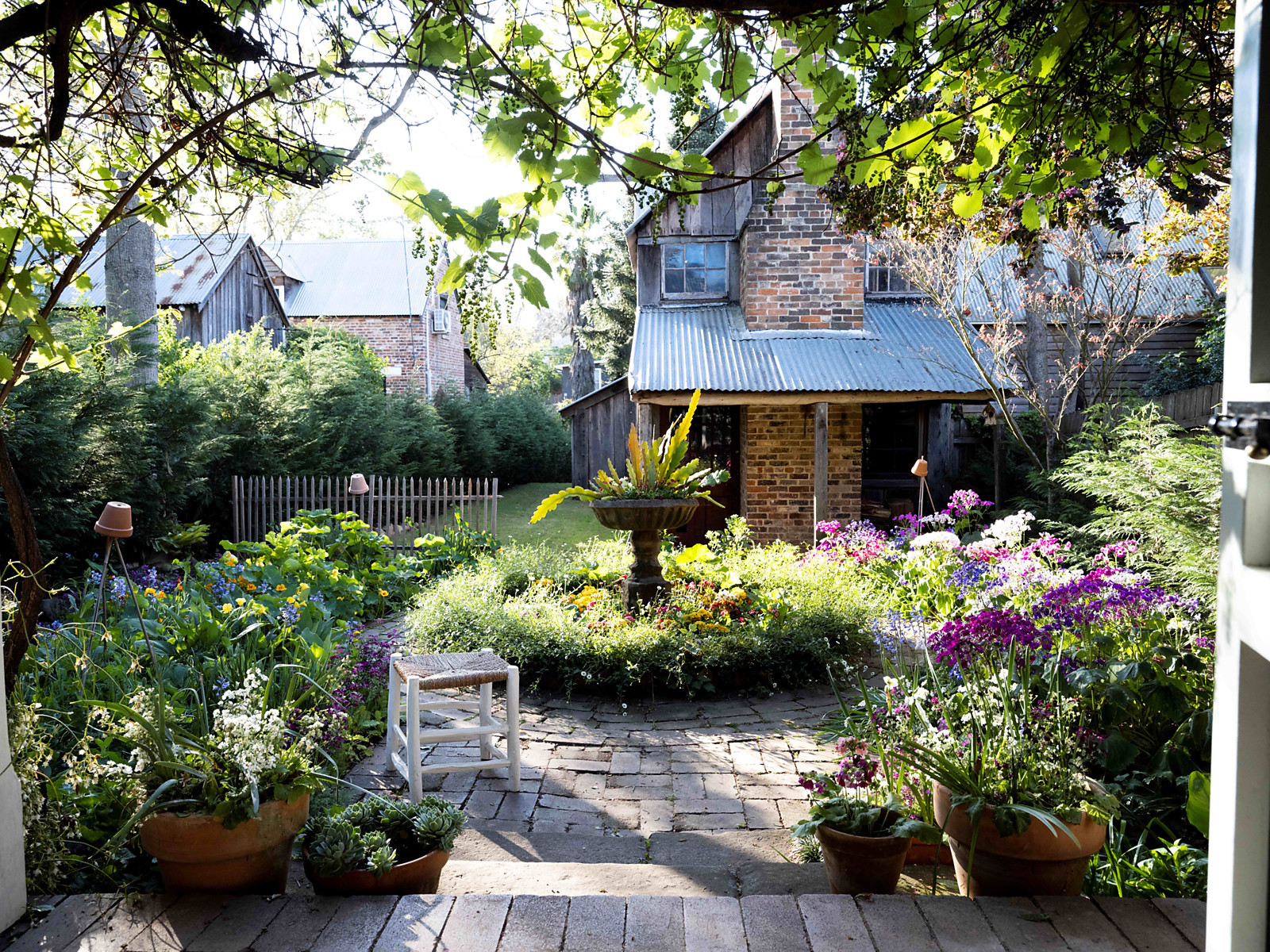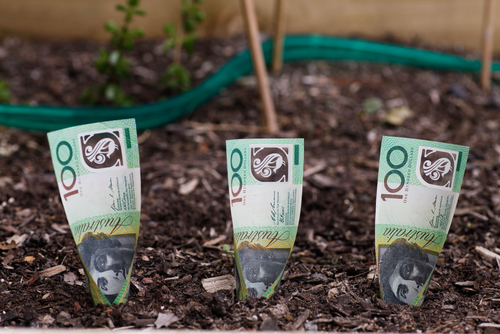Gold Is at a Record High. Why It Is Set to Rise Even More.
Is gold’s strength a flash in the pan or a golden opportunity?
The yellow metal just completed its best two-quarter stretch in eight years on its way to a record high of $2,319 per ounce today.
That performance comes as a bit of a surprise at first blush. After all, gold prices typically rise when interest rates decrease and fall when rates swing higher. Yet recent economic data suggest the Federal Reserve will have to keep interest rates elevated for longer than previously thought to tame inflation.
There has been some good news on inflation. Last Friday, for instance, we learned that the core personal consumption expenditures (PCE) index, which is the Fed’s preferred inflation measure, rose just 2.8% year over year and 0.3% month over month, as expected , in February.
Shorter-term trends paint a more challenging picture for the Fed, however, given that the three-month core PCE trend reflects 3.5% annual growth compared with 2.5% in late 2023.
“The relevant news is that recent inflation data are rising briskly,” writes Michael Lewis, who heads Free Market Inc., an economic consulting firm. This translates into higher rates for longer as the odds of a June rate cut have fallen to 58% from 73% a month ago. Mary Daly, the chief of the San Francisco Federal Reserve, said Tuesday there is “ really no urgency ” to cut rates. Fed Chairman Jerome Powell echoed that sentiment today.
Monday’s ISM manufacturing index report reinforces that narrative . In March, the index delivered its strongest growth since September 2022, rising to 50.3, easily exceeding the expectation of 48.4.
Not surprisingly, on Monday, stocks fell as the yield on the 10-year bond surged to 4.32%. Tuesday we saw more of the same with key stock indexes falling and the 10-year yield rising as high as 4.4% , its highest level in 2024 . Higher rates have been pressuring stocks, bonds, and cryptocurrencies .
Gold is powering higher, however. March 22 is the last day that gold prices fell. The price of gold has risen 9.7% this year while the yield on the 10-year has gained 10.4%.
“Gold is the near-zero yielder that is then showing record demand, despite a world where high nominal yields and carry are still dominant,” wrote Deutsche Bank macro strategist Alan Ruskin in a newsletter last week. “If gold prices won’t go down in an inflated nominal yield world, they can surely go up as the G-10 yield plateau gives way, and yields likely start their descent in” the second half of this year, Ruskin continued.
So what explains gold’s recent rise amid higher rates? Strong demand from China is one factor . The People’s Bank of China went on a buying spree last year, acquiring a net 225 metric tons of gold—the most among all central banks and the country’s biggest expansion of gold reserves since 1977.
With China’s central bank reserves at a record high, its consumers are also actively buying the precious metal, partly due to concerns about their economy and stock market. Among Chinese investors, demand for gold-related ETFs is “booming,” according to The Wall Street Journal, and Chinese imports of gold have surged 51% in the first two months of 2024 compared with the same period last year.
Gold’s more volatile counterpart, silver, surged to a two-year high today, gaining 5% to $27.22 per ounce. Unlike gold, which is at a record high, silver would need to rise more than 80% to reach its 2011 high of near $50.
“The formerly nonchalant silver finally appears ready to join gold’s advance,” John Roque, a technical analyst at 22V Research, wrote in a note, Barron’s reported . “$30 as the first target and then, presuming a breakout, $40 as the second target.” Silver prices are up 12.5% this year.
The entire commodities complex is showing relative strength as the Bloomberg Commodity Index is at its highest level since December . Crude oil is 20.6% higher this year.
Safe-haven demand for gold may increase given fast-rising geopolitical tensions in the Middle East. Moreover, concerns about the national debt are growing louder and more pointed from notable figures across the political spectrum. Unfortunately, there is no indication that politicians will quit pandering to short-term considerations (meaning votes) by making tough choices. As such, expect them to keep playing Kick the Can until one of them slices their foot.
Given all of this, the outlook for gold remains bright . On March 29, Barron’s cited an analysis by economist Charles Gave, founder of Gavekal Research. “The S&P 500 is on the verge of becoming overvalued versus the stock of capital, while gold is almost undervalued against my measure of retained earnings.”
Gave added, “Gold is ‘undervalued’ against the S&P 500 by a hefty -52% and -13% versus its own long-term trend. In contrast, the S&P 500 stands 33% above its own long-term trend level.” Recommending that investors hedge equity exposure with at least 20% of their portfolio in gold, Gave concluded, “At this point my preference based on the relative position of the two reserve assets is to favour gold, followed by equities.”
 Copyright 2020, Dow Jones & Company, Inc. All Rights Reserved Worldwide. LEARN MORE
Copyright 2020, Dow Jones & Company, Inc. All Rights Reserved Worldwide. LEARN MORE
This stylish family home combines a classic palette and finishes with a flexible floorplan
Just 55 minutes from Sydney, make this your creative getaway located in the majestic Hawkesbury region.
Continued stagflation and cost of living pressures are causing couples to think twice about starting a family, new data has revealed, with long term impacts expected
Australia is in the midst of a ‘baby recession’ with preliminary estimates showing the number of births in 2023 fell by more than four percent to the lowest level since 2006, according to KPMG. The consultancy firm says this reflects the impact of cost-of-living pressures on the feasibility of younger Australians starting a family.
KPMG estimates that 289,100 babies were born in 2023. This compares to 300,684 babies in 2022 and 309,996 in 2021, according to the Australian Bureau of Statistics (ABS). KPMG urban economist Terry Rawnsley said weak economic growth often leads to a reduced number of births. In 2023, ABS data shows gross domestic product (GDP) fell to 1.5 percent. Despite the population growing by 2.5 percent in 2023, GDP on a per capita basis went into negative territory, down one percent over the 12 months.
“Birth rates provide insight into long-term population growth as well as the current confidence of Australian families,” said Mr Rawnsley. “We haven’t seen such a sharp drop in births in Australia since the period of economic stagflation in the 1970s, which coincided with the initial widespread adoption of the contraceptive pill.”
Mr Rawnsley said many Australian couples delayed starting a family while the pandemic played out in 2020. The number of births fell from 305,832 in 2019 to 294,369 in 2020. Then in 2021, strong employment and vast amounts of stimulus money, along with high household savings due to lockdowns, gave couples better financial means to have a baby. This led to a rebound in births.
However, the re-opening of the global economy in 2022 led to soaring inflation. By the start of 2023, the Australian consumer price index (CPI) had risen to its highest level since 1990 at 7.8 percent per annum. By that stage, the Reserve Bank had already commenced an aggressive rate-hiking strategy to fight inflation and had raised the cash rate every month between May and December 2022.
Five more rate hikes during 2023 put further pressure on couples with mortgages and put the brakes on family formation. “This combination of the pandemic and rapid economic changes explains the spike and subsequent sharp decline in birth rates we have observed over the past four years,” Mr Rawnsley said.
The impact of high costs of living on couples’ decision to have a baby is highlighted in births data for the capital cities. KPMG estimates there were 60,860 births in Sydney in 2023, down 8.6 percent from 2019. There were 56,270 births in Melbourne, down 7.3 percent. In Perth, there were 25,020 births, down 6 percent, while in Brisbane there were 30,250 births, down 4.3 percent. Canberra was the only capital city where there was no fall in the number of births in 2023 compared to 2019.
“CPI growth in Canberra has been slightly subdued compared to that in other major cities, and the economic outlook has remained strong,” Mr Rawnsley said. “This means families have not been hurting as much as those in other capital cities, and in turn, we’ve seen a stabilisation of births in the ACT.”
This stylish family home combines a classic palette and finishes with a flexible floorplan
Just 55 minutes from Sydney, make this your creative getaway located in the majestic Hawkesbury region.





















